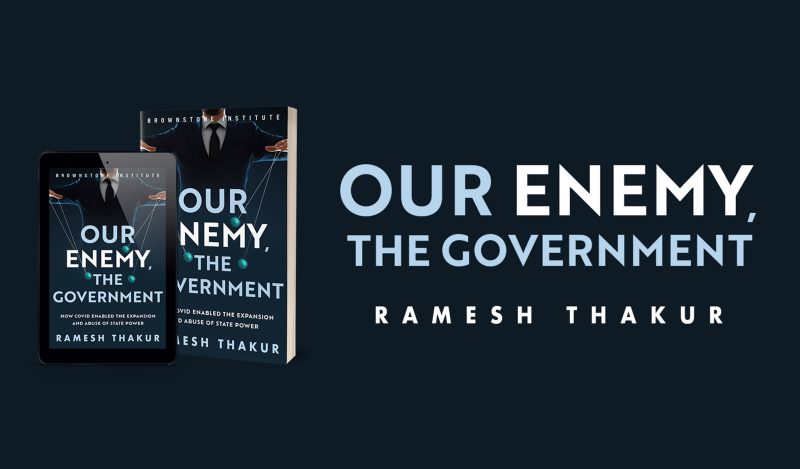Respiratory viruses are both unpredictable and commonplace. The name of the most well-known one, Influenza, originated in 15th century Italy, and comes from the old Italian expression influenza dei pianeti or influence of the planets. They could not explain its sudden and unaccountable behavior and ascribed its capricious nature to the influence of planets.
However, influenza is just one of the many agents involved in active respiratory infections; there are scores of known ones which give a spectrum of clinical presentations, from a mild cold to severe pneumonia. We have no idea how many agents there are. Since 1970, 1,500 pathogens have been discovered – 70% have come from animals. Some authors report that up to 40% of respiratory infections have no recognised causes.
Over 30 years, we have studied physical interventions, vaccines, and antivirals for registered compounds and ones which never made it to market. In 2014 we encouraged Roche and GSK to give up the business part of their regulatory submissions for their antivirals, opening up a whole new source of clinical study report evidence that is infinitely more reliable and complete than biomedical journal publications.
So when SARS-CoV-2 struck, we watched unfolding events with curiosity. We try to understand the effects of the agent and those of our leaders’ responses. To achieve this, you need reasonably good data.
We are used to wastage, error, and poor quality research underpinning patient care. The influenza field is further affected by flawed science, pandemic conspiracies and political contamination that leads to the inevitable box thinking with the advent of a newly identified agent.
In the UK, like in most other countries, the daily situation briefings delivered by top scientific advisers who we knew had little experience of respiratory virus epidemiology set the pace of the pandemic and the subsequent hysteria.
The briefings were devised to illustrate the seriousness of the COVID-19 situation by presenting running totals of new cases, hospital admissions and deaths. We call this the three-legged stool of the COVID narrative. The stool provided the rationale for an unprecedented level of restrictions on civil liberties and governmental diktats designed to control the unruly populace in the hope of managing – or even eradicating – the agent.
After exploring aggregate data, we looked in-depth into the science of the three legs: Speaking daily, we discussed and analyzed the certainty behind the summary figures and trends presented every night. Finally, we asked ourselves: what props the stool up?
We tried making sense of the various government websites, the relevant papers in biomedical journals, and the tests applied to identify “cases.” We soon understood that the PCR was inappropriately used as a mass screening tool. Its limits were not understood by those reporting its results or those presenting aggregate data.
Even with correct specimen management and a competent laboratory process, a simple PCR test cannot distinguish active cases from those recovering from SARS-CoV-2 infection who are no longer infectious and a danger to no one.
We used our systematic review skills to analyse the studies comparing the culture of SARS-CoV-2, the best indicator of current active infection and infectiousness, with the results of PCR.
Complete viable viruses are necessary for transmission, not the fragments identified by PCR. PCR picks up minute particles which take weeks to be cleared by our immune systems, not complete viruses, so governments were locking up the contagious with the non-contagious.
Misuse of PCR underpinned the whole narrative. Its very high sensitivity and robotic acceptance as a gold standard created the illusion of many more cases (i.e. active infections) than were really present and prompted long quarantines, disrupting society and lives.
Therefore, the first leg of the stool is unstable, made worse by the absolute refusal to link PCR results to the reporting of viral load estimates, which could (coupled with accurate history and thorough epidemiology) give a likelihood of infectivity.
The second leg, attribution of death, was affected by bureaucratic bungling and PCR misuse. We discovered that UK public health bodies had 14 different ways of attributing the role of SARS-CoV-2 to a death. Some totals included deceased who had tested negative. Post-mortem examinations were uncommon, as was independent verification of causes of death. So aggregate attribution of mortality figures was questionable – the second leg started teetering too.
We are currently analyzing the last leg of the stool: hospital capacity. Hospital episodes take time to reconstruct, but they are also underscored by PCR misuse, poor definitions, and confusing messaging. A coherent dataset is unlikely to exist, so we have to piece the puzzle together.
We reported our findings in a series of web reports for a charity and the mainstream media, the only avenues that evade some censorship.
Where did our data come from? From the only section of society which had an idea of what was going on, or at least were asking questions instead of accepting the “rule of six” or supermarket trolley police checks like obedient cattle, the public.
Freedom of Information (FOI) request sites in the UK are sources of amazingly bright questions and bureaucratic and sometimes misleading answers. Here are some examples. Public Health England does not know whether hospitals have a financial incentive to classify an admission episode as COVID-related, so how can they interpret the data?
Some deaths are classified as COVID-related, even though negative. The Department of Health has no idea how many and which of the PCR kits are in use, all with a different performance which has not been standardized. So they were adding apples with trees and hay bales and reporting the consequent nonsense daily.
The power of FOI host websites like WhatDoTheyKnow is immense and underutilized. The questions and responses are public for everyone to see, and most of the public’s questions are pin-sharp.
The FOI ACT provides access to information held by public authorities who are obliged to publish certain information about their activities; and members of the public are entitled to request information from public authorities.
However, the FOI respondents show poor science, bureaucracy, delegation to juniors to respond to “nuisance” questions and a lack of coherent vision – at times, the response is dismissive. Still, there are occasional nuggets of vital information.
Why not set up a similar FOI portal in every country? We think it is the only way to make these people accountable to voters. You can follow our attempts at getting to the bottom of hospital episodes in England, Wales and Northern Ireland by following our correspondence: 1 2 3 4.
The stool’s three legs remain vital to understanding the rationale for restrictions imposed throughout the pandemic.
Conflict of interest statements
TJ’s competing interests are accessible here. CJH holds grant funding from the NIHR, the NIHR School of Primary Care Research, the NIHR BRC Oxford and the World Health Organization for a series of Living rapid review on the modes of transmission of SARs-CoV-2 reference WHO registration No 2020/1077093. He has received financial remuneration from an asbestos case and given legal advice on mesh and hormone pregnancy tests cases. He has received expenses and fees for his media work including occasional payments from BBC Radio 4 Inside Health and The Spectator. He receives expenses for teaching EBM and is also paid for his GP work in NHS out of hours (contract Oxford Health NHS Foundation Trust). He has also received income from the publication of a series of toolkit books and for appraising treatment recommendations in non-NHS settings. He is Director of CEBM and is an NIHR Senior Investigator.
Published under a Creative Commons Attribution 4.0 International License
For reprints, please set the canonical link back to the original Brownstone Institute Article and Author.










